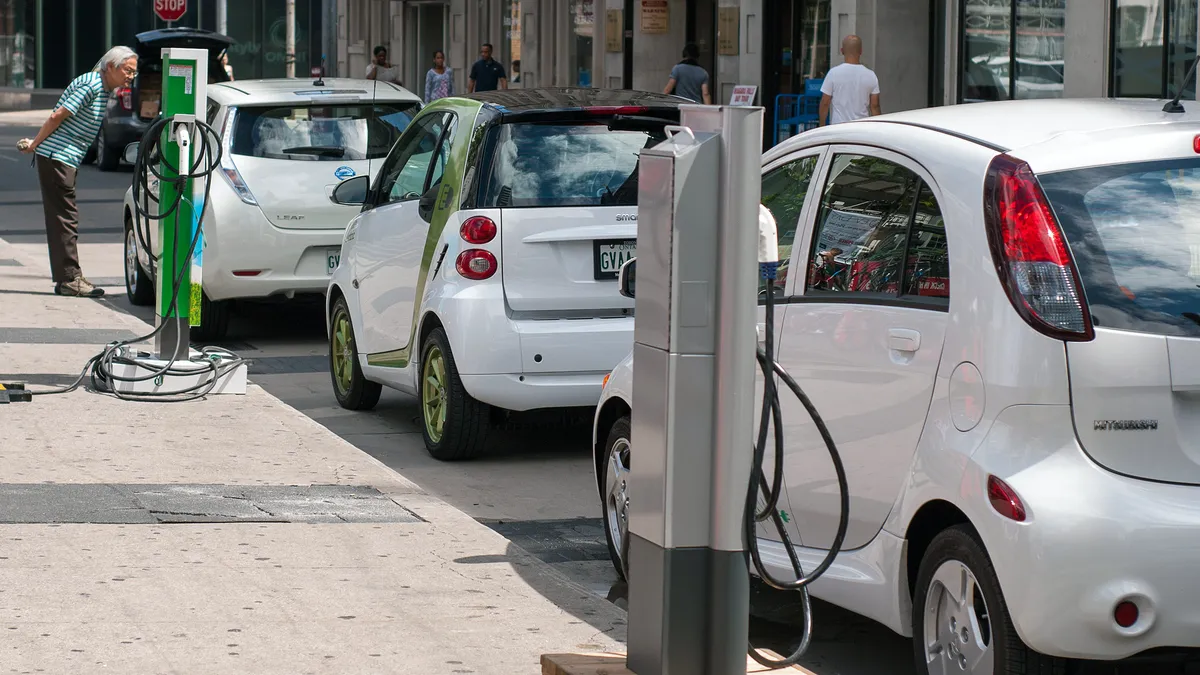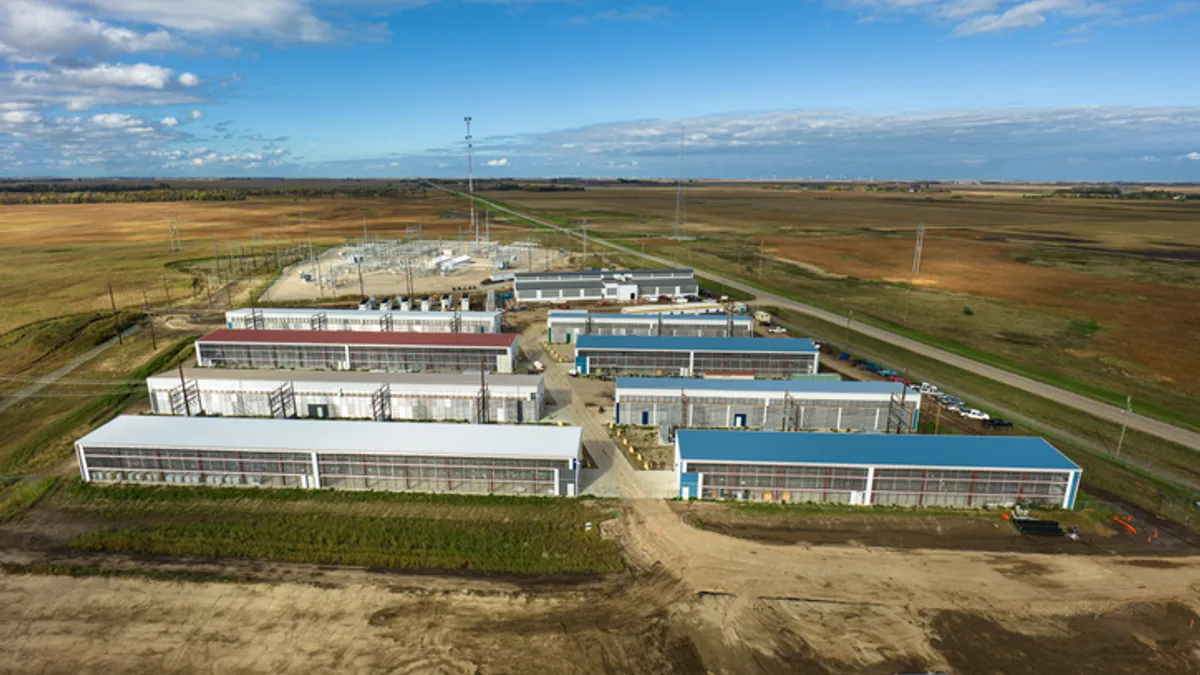The following is a viewpoint by Sarah A. W. Fitts, a partner in Schiff Hardin's New York office and Caitlin M. Ajax, an attorney in Schiff Hardin's Chicago office.
Much has been written about the problem of the stagnating electricity market due to a combination of falling demand, widespread energy efficiency initiatives, lower electricity costs and aging infrastructure.
This issue has created a situation in which both power generators and utilities are unable to effectively plan for the future. Some utilities have even asked the federal government to approve rate payer-funded bailouts for specific power plants.
But some think that this trend could be reversed if the U.S. demands increased electrification of everyday necessities like transportation and home heating. Many project that the growing market for electric vehicles (EVs) will result in increased demand for electricity and investment in infrastructure and a grid necessary to support widespread EV deployment.
So it is ironic that the Trump Administration's recent proposal to freeze fuel efficiency and emissions standards could, by suppressing growth in demand for electricity, actually hurt the same businesses that the administration has been trying so hard to support. While both utilities and generators should continue to factor electrification of mobility into their demand and infrastructure planning, the administration's proposal creates new uncertainty for the industry.
The ever-expanding EV market has undoubtedly created new revenue opportunities for electricity generators and utilities — and the EV market is indeed growing. One projection estimated that increased electrification of cars and trucks across the globe would drive electricity consumption upwards 300-fold by the year 2040.
To date, almost every major automaker has gone public with plans to manufacture at least one EV model by 2020.
For example, Ford has announced plans to invest $11 billion and have 40 EVs in its model lineup by 2022. General Motors has pledged to produce upwards of 20 EV models by 2023 with the expectation that its fleet will eventually be all electric.
Here are three reasons generators and utilities are particularly attracted to an EV future:
| 1. Additional ratepayer-funded investment for charging stations |
|---|
|
EVs will need to be charged and in most instances, whether through public or home charging, that electricity is expected to come from the grid, especially for cars charged overnight when residential solar panels do not generate electricity due to lack of sun. The need to reconfigure the distribution grid to support commercial EV charging stations, as well as individual charging stations at owners' homes, could provide a basis for additional rate payer-funded investment, thereby benefiting utilities in the long-term. Though there have been concerns that EV market expansion could result in grid overload, utility planners seem confident that these problems can be managed through "intelligent" charging programs that incentivize EV owners to charge their vehicles at times when both grid demand and electricity prices are low or automatically curtail charging when demand is high. Managed charging also promotes grid stabilization, at least to a point, by increasing electricity demand during traditional off-peak periods. |
| 2. Grid reinforcement without costly infrastructure |
|
The potential for EVs to act as "batteries on wheels" could offer grid reinforcement by serving as an energy source during peak demand or emergency scenarios. The use of EVs as mobile storage units could reduce or eliminate the need for utilities to build costly infrastructure, such as power plants or storage devices, to meet demand at times of high energy use. |
| 3. Resilient grid means more reliability |
|
The benefits of EV deployment extend beyond utilities. A more robust and resilient grid should provide more reliable service to all users. To the extent that EVs can increase demand during off-peak periods and provide an alternative to costly infrastructure, all users could also enjoy lower electricity costs since capital costs will be lower and spread out over a higher demand. |
Some utilities have even thrown their political support behind EV market expansion, often alongside environmental groups.
Utilities have actively backed efforts by policymakers to eliminate caps on tax credits for EV manufacturers and barriers to construction of EV charging stations. For example, a group of 44 utilities and other industry actors sent a letter to the U.S. House of Representatives earlier this year asking Congress to lift an EV manufacturing cap that allowed tax credits only for the first 200,000 EVs produced by each company.
But the Trump Administration's recent attempt to roll back fuel efficiency standards puts these new opportunities in jeopardy and creates new uncertainty for both generators and utilities.
The proposed rulemaking issued last month contained three key directives that could affect the marketability of EVs in the U.S., including (1) freezing emissions standards at 2020 levels, (2) challenging California's waiver under the Clean Air Act, which permits the state to implement emissions standards that are more stringent than those of the federal government, and (3) challenges the programs of other states that voluntarily adopted California standards.
As a reminder, California implemented regulatory programs for both tailpipe emissions and fuel efficiency. To date, thirteen other states have adopted California's emissions standards for gas-powered vehicles, while nine other states voluntarily adopted California's Zero Emission Vehicle (ZEV) program designed to increase sales of EVs.
While the proposal may not have a significant effect on power generation and utility-scale grid planning for bulk electricity load, those doing business in California and other ZEV states may see beneficial EV-related opportunities disappear at the local distribution level if the rule becomes a regulation, and EV market growth is suppressed.
The effects will not be evenly felt and will vary depending on the state and energy regulatory scheme at issue. On the other hand, consumer demand for green products, clean energy and lower costs coupled with rapid improvements in technology suggest that the path forward on mobility electrification will continue with or without support of the federal government.
Even if the administration's proposal becomes law, we can expect that California and the states that adopted its ZEV standards will find other ways to support cleaner transportation trends.
At this time, there are two key takeaways for the power industry:
1. The proposal has not yet become a regulation, so generators and utilities should continue to factor EV production into their long-term planning in order to take advantage of opportunities related to increased electricity demand and grid reinforcement. Utilities in particular can still take advantage of new investment opportunities as the market for EVs continues to grow.
2. Both generators and utilities will need to do their planning in a less certain environment, as state and federal laws requiring or promoting mobility electrification in some regions diverge, and as the federal government, in its efforts to support traditional fossil assets, may actually be clipping the wings of two traditional American businesses — power companies and utilities.




















